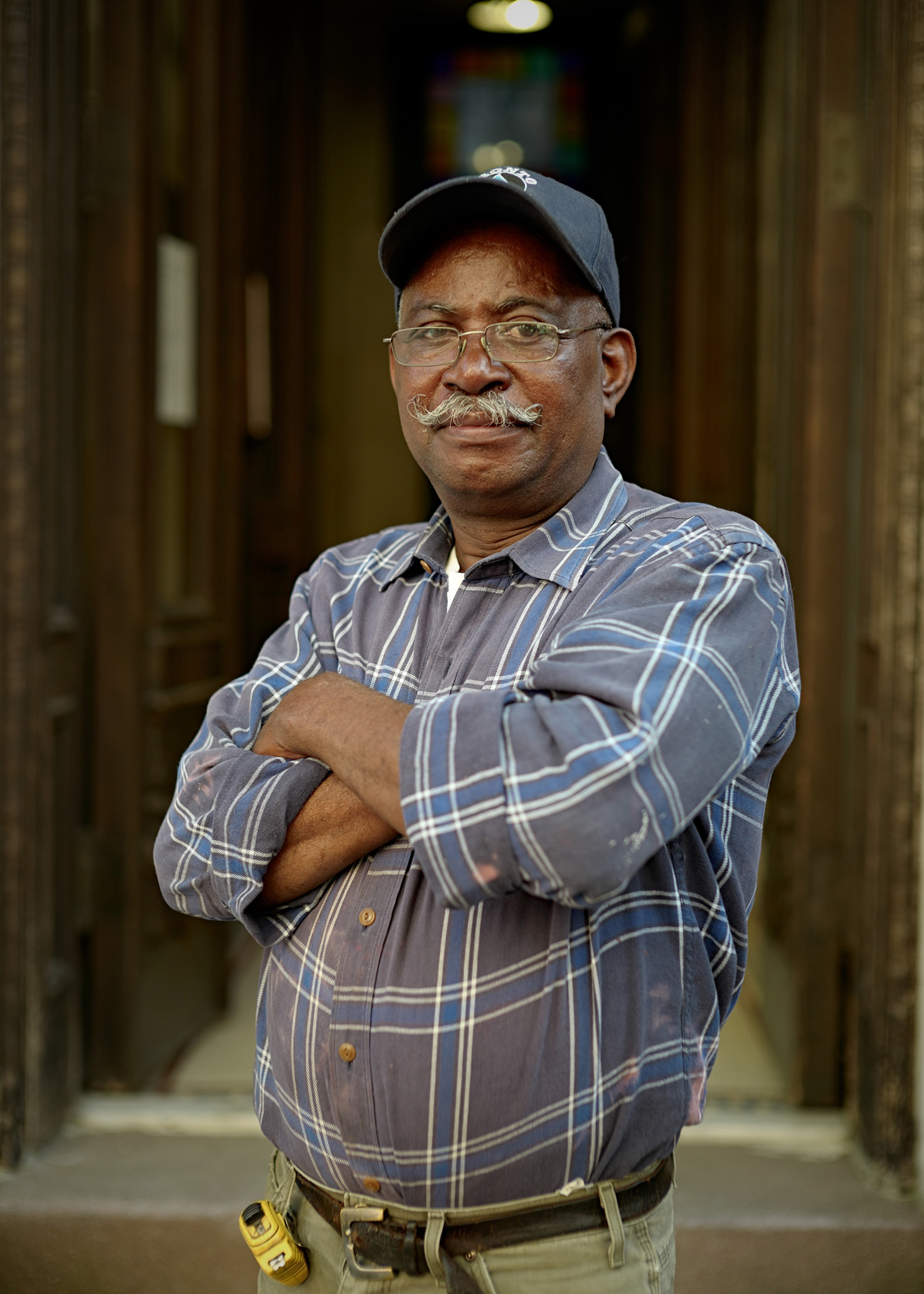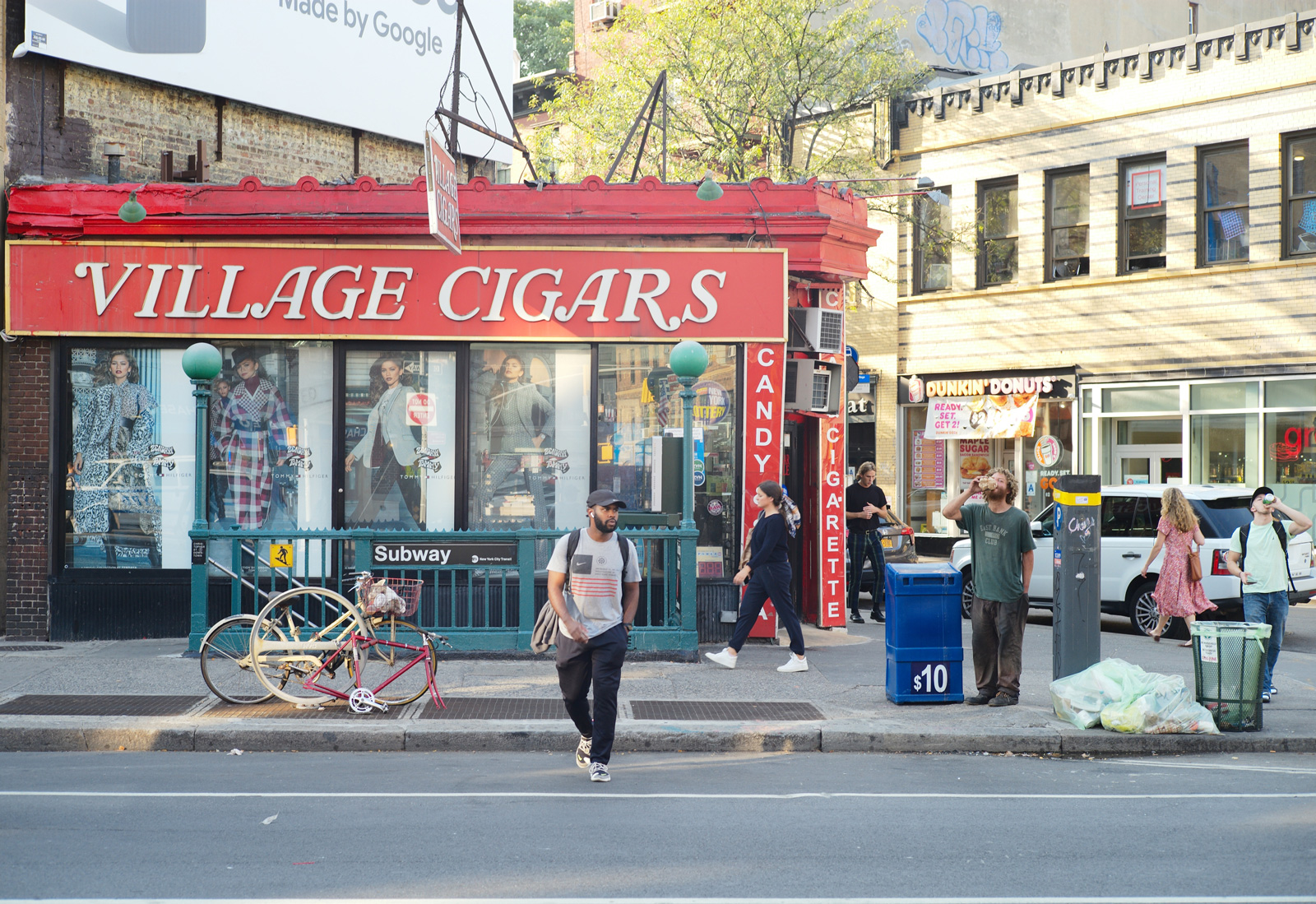
I arrived in New York in 2013 and moved into a rent-stabilized apartment on a prime stretch of Bank Street in the West Village. My circumstances suggested time travel: the cracking plaster on my living room walls and my monthly rent had barely been altered since the early Eighties. From my rear window, I gazed at the privacy-glass panes enclosing the four-story townhouse next door, formerly owned by A-Rod. I dropped downstairs to Little Marc Jacobs—the brand’s now-closed children’s clothing outpost, then in my building’s ground-floor—to pick up babysitting jobs with the store’s customers, later finding myself in the living rooms of their nearby townhouses, worth millions.
The apartment was never mine; my aunt’s friend had lived there for decades and wanted someone to watch over her place while she cared for her elderly parents in another state. Our landlord took a hands-off view of the arrangement, and, without qualms, I seized the nepotistic advantage that has for decades granted a shrinking and somewhat arbitrary class of New Yorkers access to affordable housing from bygone eras, even as the rest of the Village became increasingly expensive.
Late last year, when I moved to Brooklyn after nearly six years on-and-off in the West Village, the daily realities of decades of incoming, exorbitant wealth had come into clear view. With its churn of stores appearing then disappearing and the rich who come and go like a traveling circus, the neighborhood had come to seem to me a symbol of impermanence driven by wealth. At first glance, its increasing emptiness—vacant commercial spaces blighted by skyrocketing rents, shells of brownstones, and luxury apartments unoccupied for fifty weeks a year—suggested a place on the precipice of becoming something else. In time, I understood that the neighborhood’s emptiness is simply its deepening condition.
Roughly speaking, the West Village runs east from the Hudson riverfront to Seventh Avenue, and south from Fourteenth Street to Houston Street. Walking the neighborhood’s zigzag byways over the years, I felt a sense of around-the-corner-possibility. Perfectly preserved facades hid all evidence of interior change. The fixed faces of the West Village’s houses reinforce the neighborhood’s dichotomy of sameness and change, of tradition and rupture, the feeling that, despite all the forces working against it, the historical identity of the neighborhood won’t quite shake.
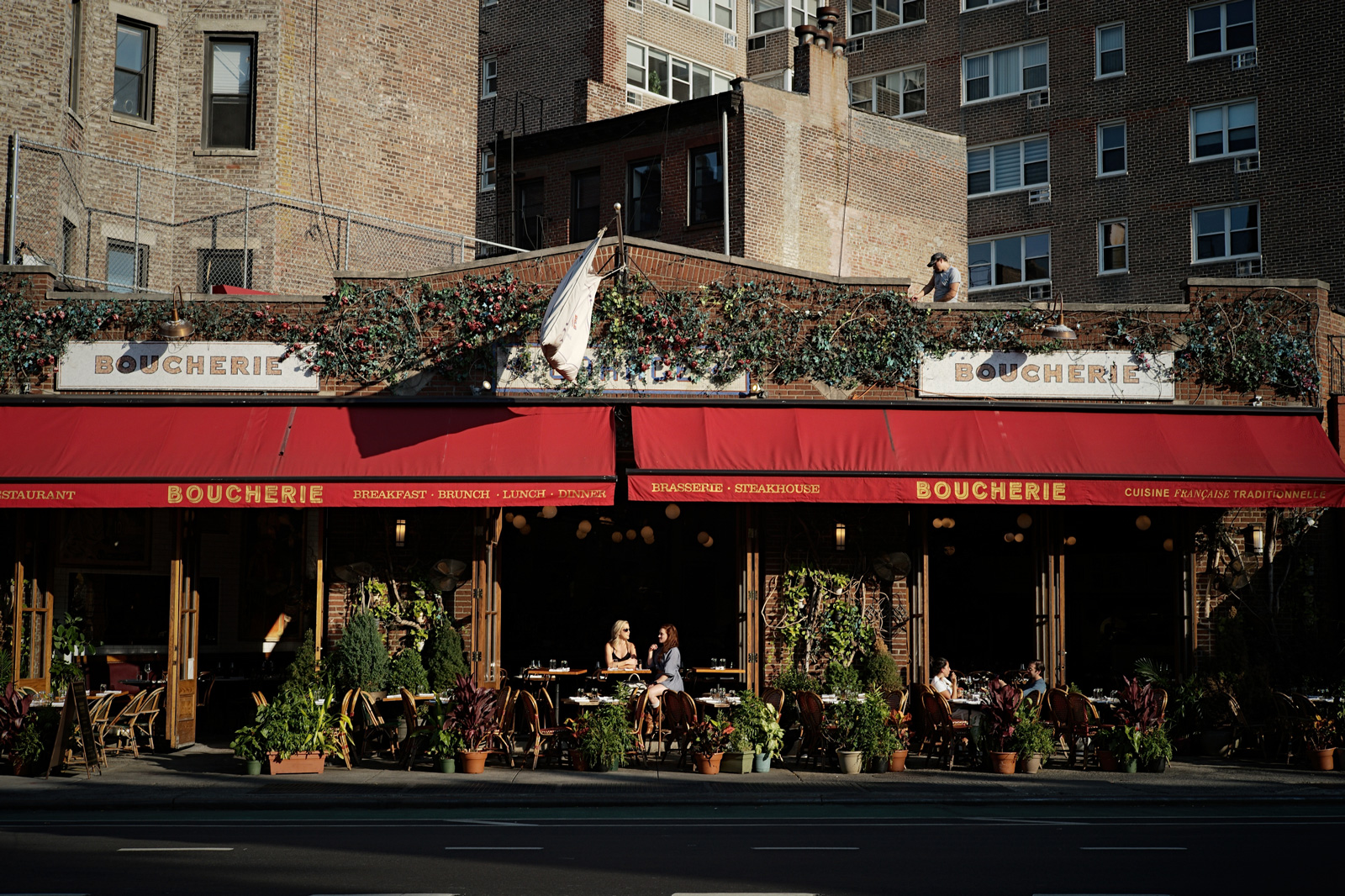
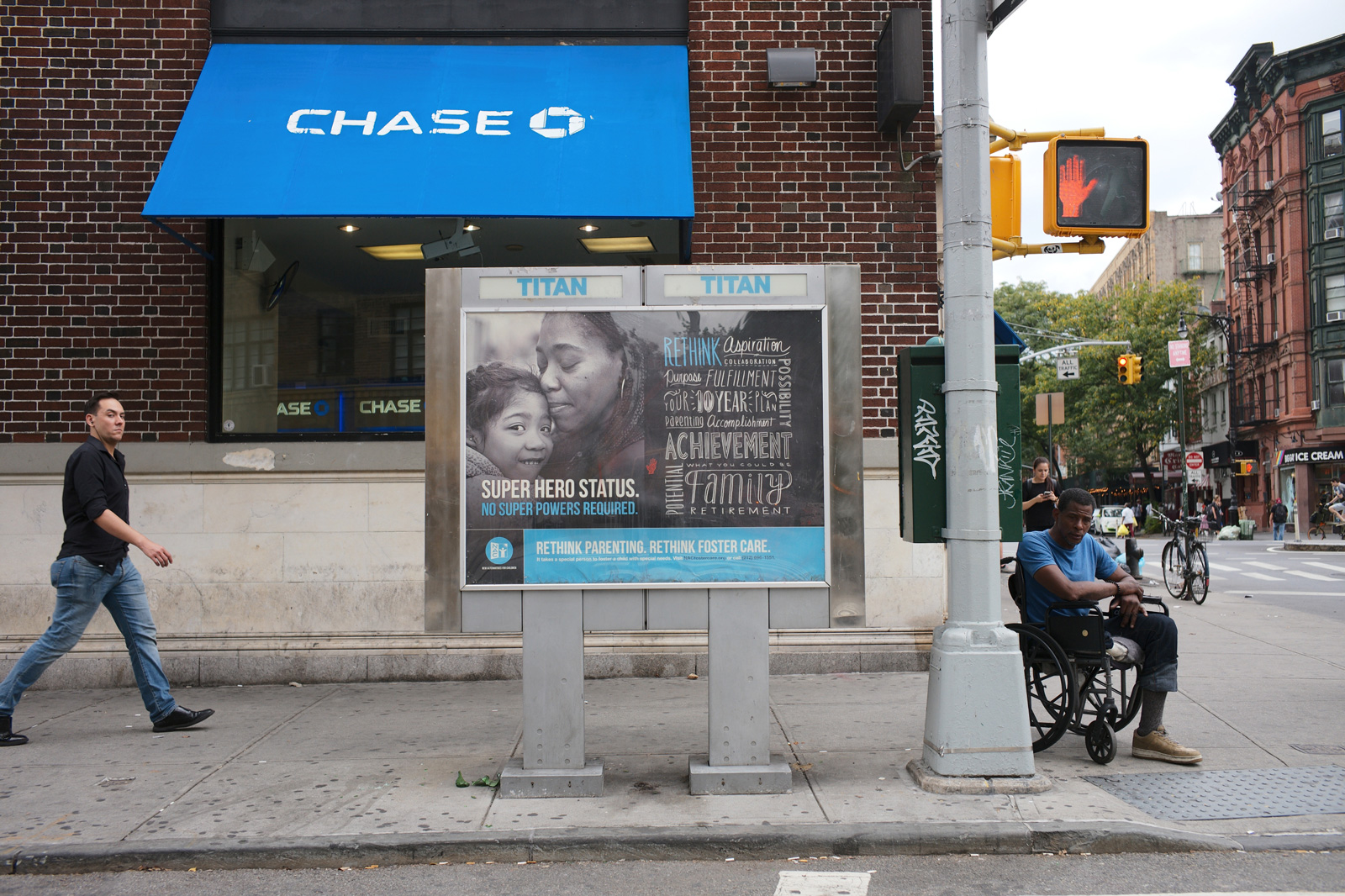
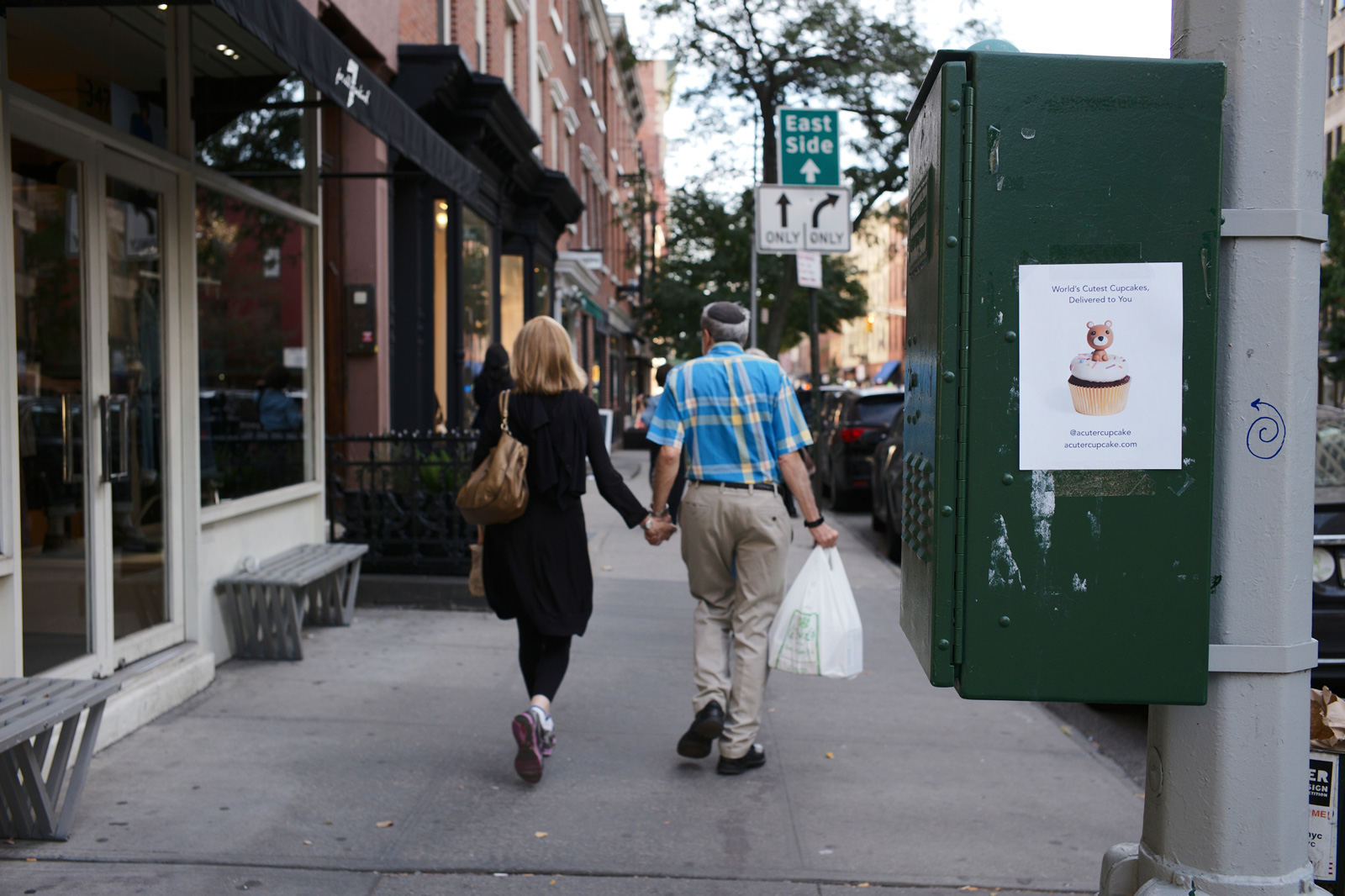
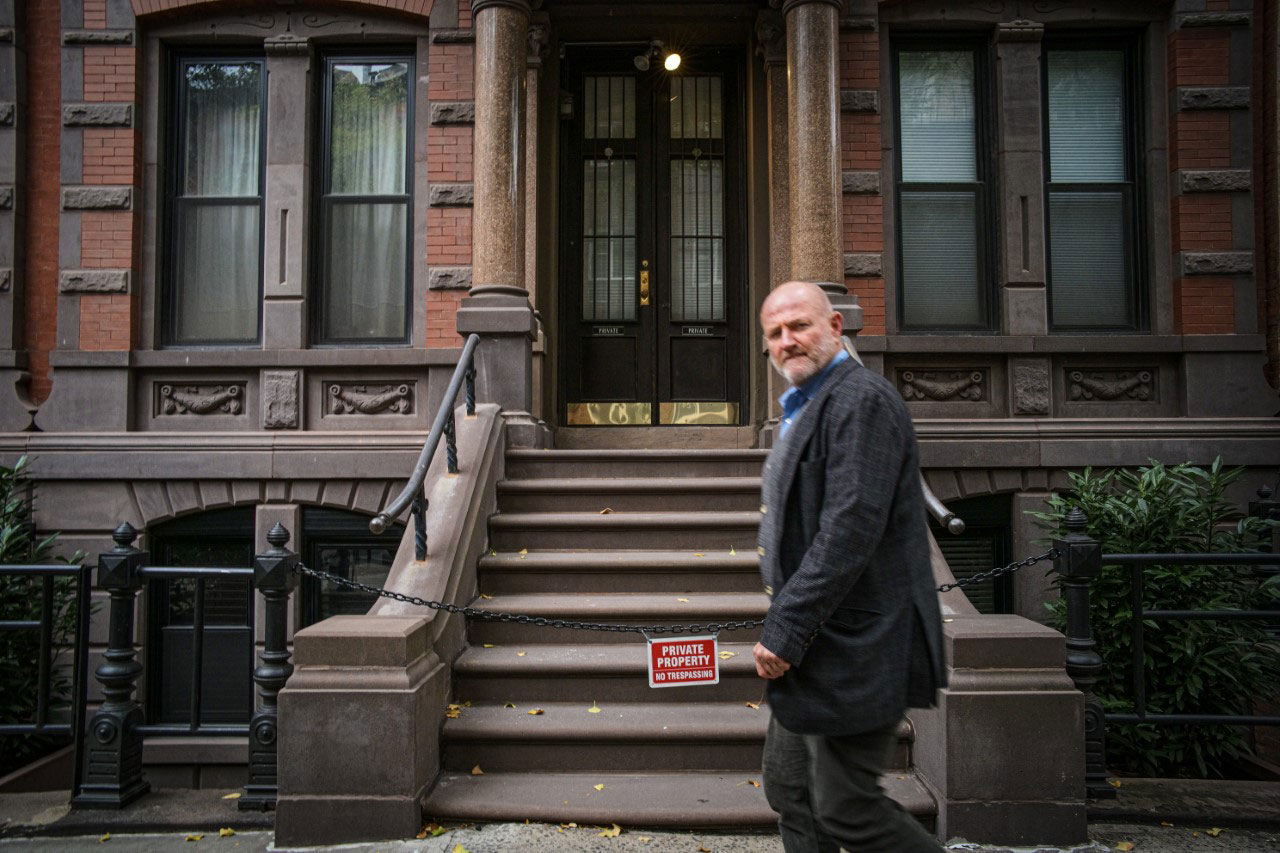
The American Community Survey shows that in the decade between 2006 and 2017 the number of twenty- to twenty-four-year-olds living in my former neighborhood fell an estimated 42 percent (just one example of data that I found and interpreted with the help of Frank Donnelly, geospatial data librarian at the GIS Lab at Baruch College). In the same period, the ACS estimates that residents eighty-five-years-old and older have as much as doubled, and when they go, they will take all traces of the old neighborhood with them. For now, they remain and keep the past present, even though they say they feel invisible to their new, moneyed neighbors.
“A lot of people are uppity, they have money, why should they talk to the little people?” asked Basil Weathers, a plumber who has been hanging out on the corner of Bank and West 4th Street since he arrived in New York from Jamaica some forty years ago. When Basil and I lived in the same building, we spoke dozens of times daily, and I observed the constant watch he keeps to this day over life on Bank Street. With his “eyes on the street,” he is a “public actor” like those extolled by Jane Jacobs, the celebrated author of The Death and Life of Great American Cities (1961), who successfully preserved and expanded affordable housing in the West Village six decades ago.
But Basil is also skeptical of his longtime neighbors who gripe about newer ones. “They can’t do nothing about it… they can complain all they want but they can’t stop it,” he said, with what seemed a trace of suspicion about me, too—a latecomer bemoaning the neighborhood’s flux. In Basil’s view, to expect anything but impermanence would be naive. “You cannot blame them either,” he said about the new residents. “Money is what makes money, so you have to sit in a circle of people who also have money…What are they getting from you?”
Despite piecemeal successes, decades of activism have failed to stop developers and landlords from expelling working-and middle-class New Yorkers from their longtime Manhattan neighborhoods to make way for the rich. And yet, in June, there was a scintilla of hope that the tide may be turning. The new Democratic majority in the state legislature in Albany passed a law that makes permanent the rent-stabilized rates that govern nearly one million New York apartments, curtailing severely the incentive for predatory landlords to buy old buildings and convert their units to market rate apartments by forcing out old tenants. The new law also protects New York’s existing affordable housing stock for future tenants, after some 280,000 regulated units were lost city-wide since 1993.
Advertisement
When the Riviera Café, the forty-eight-year-old occupant of a wedge-shaped slice of 7th Avenue, closed in August 2017, its manager was stoic. “Things open, things close,” he told Gothamist. Last summer, in the lingering warmth of an August day, a real estate agent walking down 7th Avenue blared into his phone: “You could move into the Riviera space,” he said over and over, as if the listener was hard of hearing. The old café remains boarded up today.
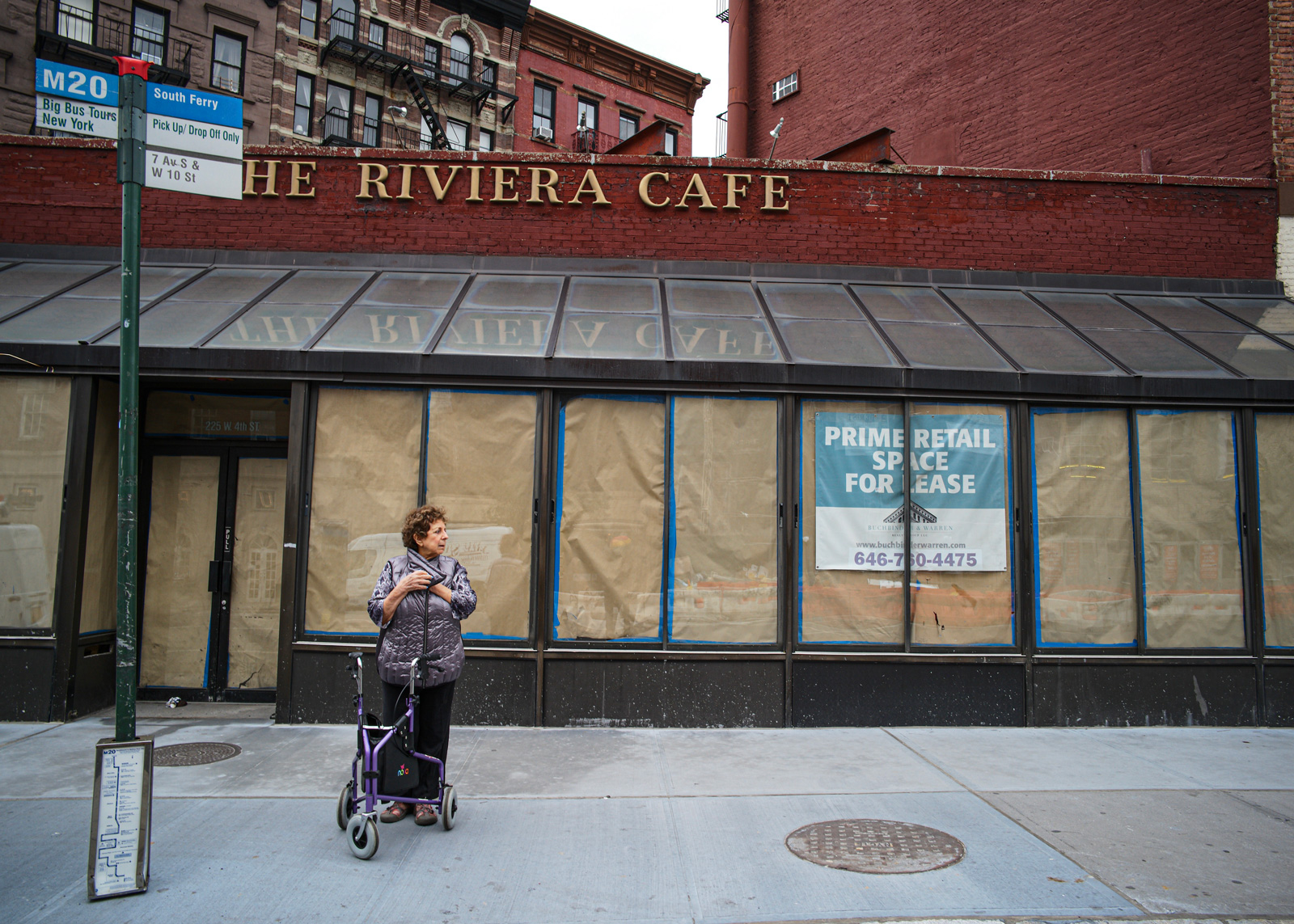
The West Village’s wealth-driven distortions lack the nightly urgency of the housing crisis that grips other parts of New York, where gentrification started later and took hold more quickly. But since a single-family house in the neighborhood sells on average for $9 million, according to Zillow, the neighborhood is an epicenter from which the upward pressure on New York housing costs emanates.
In July, the National Bureau of Economic Research circulated a paper about the consequences of wealth invasions for longtime residents of traditionally working- and middle-class downtown neighborhoods. The study finds that the arrival of wealthy residents with high disposable incomes leads, predictably, to the opening of restaurants and shops to serve them. Those new shops, in turn, lure more wealthy people downtown. It’s a fairly obvious observation, but the study shows how powerful the force is, and how dramatically it has increased in recent years.
“Rent control slows it down a little bit,” Erik Hurst, an economist at the University of Chicago and one of the study’s authors, told me, adding that rent control is not a long-term solution. The high-rent blight, he says, is a symptom, not a cause. “The question at heart is income inequality: How do we make lower income residents less lower-income? That’s not zoning policy.”
The study also found that income inequality and its more pernicious effects on poorer residents are often underestimated in downtown areas. In highly expensive neighborhoods, residents’ average incomes belie their poverty relative to their surroundings. “It doesn’t show up in the income statistics, because they are still making good incomes, but the fact that they can’t buy anything makes them worse-off because the cost of living in their immediate surroundings is so high,” Hurst told me. He sees the trend continuing largely unabated, in cities around America.
Admittedly, my six years of West Village living are a blip to the longtime residents and shopkeepers who have lived or worked there, in some cases, for half a century or more. And yet, for a brief time, I shared their experience of having an affordable apartment in an unaffordable neighborhood. Ultimately, I had more in common with the newcomers rather than less. To me, the neighborhood’s history was just that: history. I was less invested in the neighborhood and had more freedom than some to leave it.
Recently, Basil and I went to the Bus Stop Café, one of the few remaining old-school diners, though menu prices have risen substantially in recent years; Basil is an appreciated curmudgeonly regular. Some years ago, he told me, around the time the neighborhood started to change, he was fixing the toilet of a longtime customer in a building on Bank Street, when he felt something brush his ear. He swatted at it, thinking it was his shirt or a bug, and kept working. When he turned around, he was looking down the barrel of a gun. A neighbor had seen Basil, who is black, enter the apartment and called the police.
“When I came here, any one of these houses you could buy for $50,000,” he said. “Back in the day, you could just sit on the stoop.” He pegs the start of the change he witnessed to the mid 1990s. Basil used to know every occupant of Bank Street’s townhouses, until “One by one, they left the street,” he said. “People used to be more friendly. Now, you walk down the street and you don’t know who is who—you never know people’s names.”
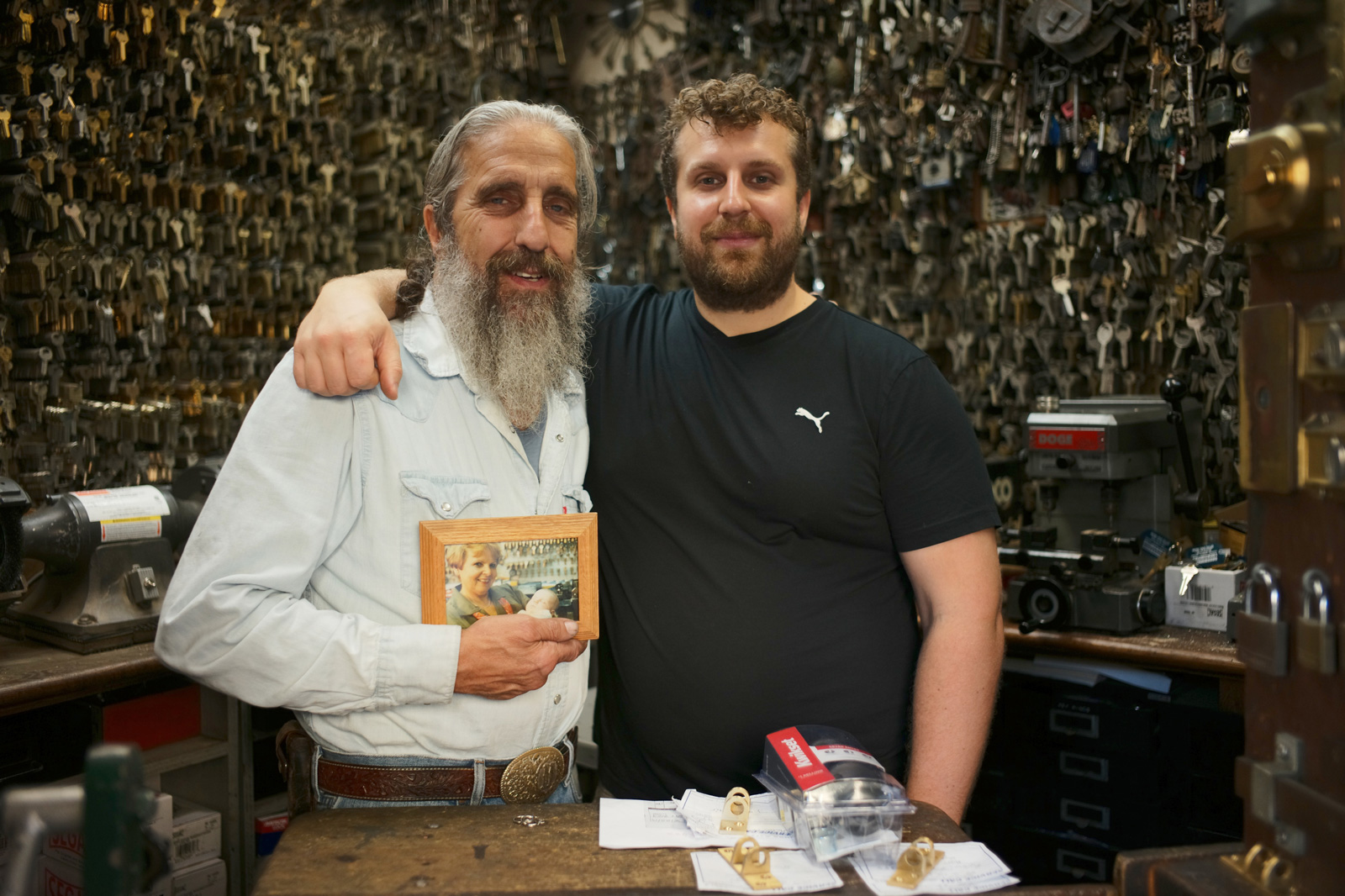
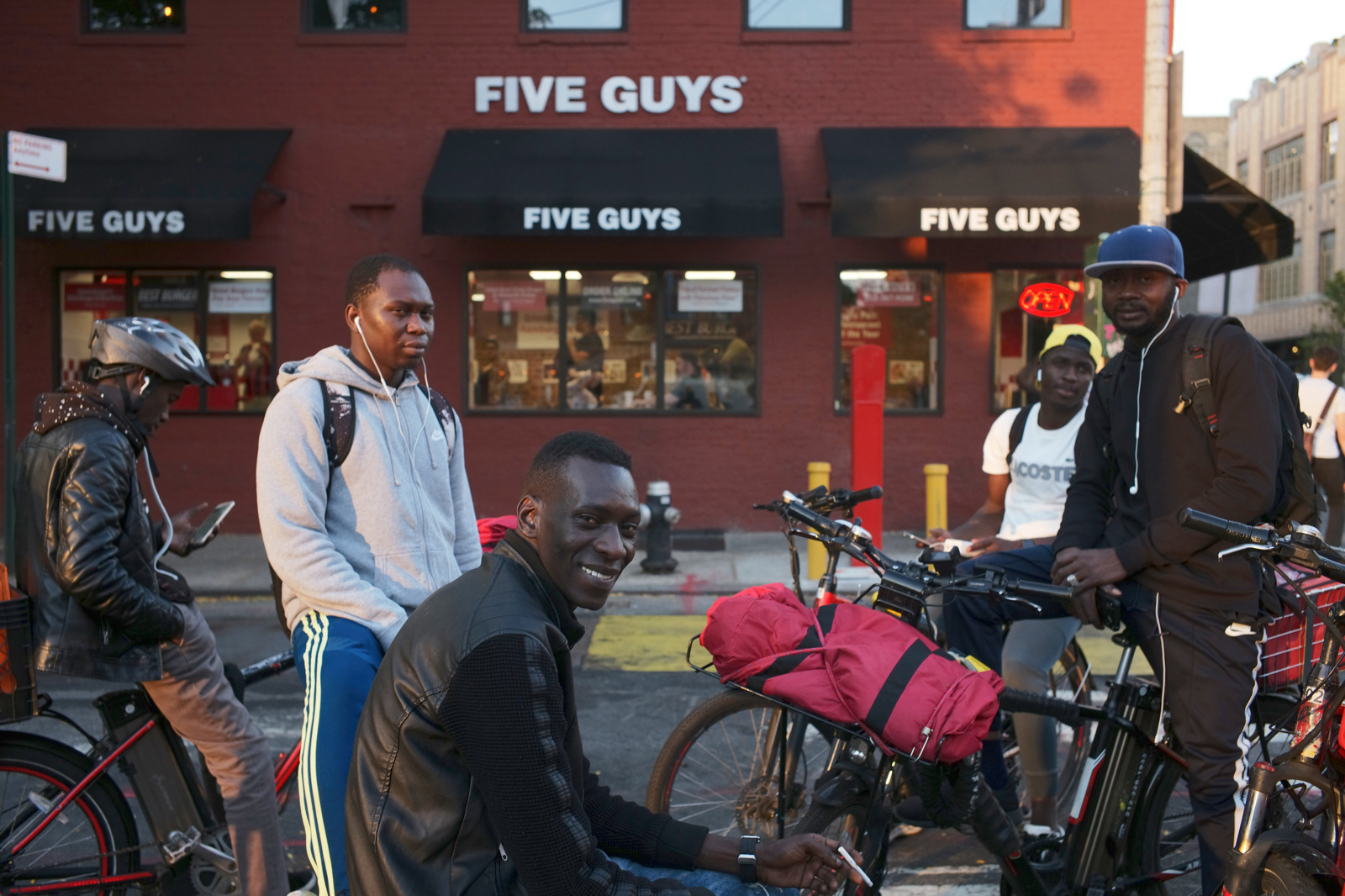
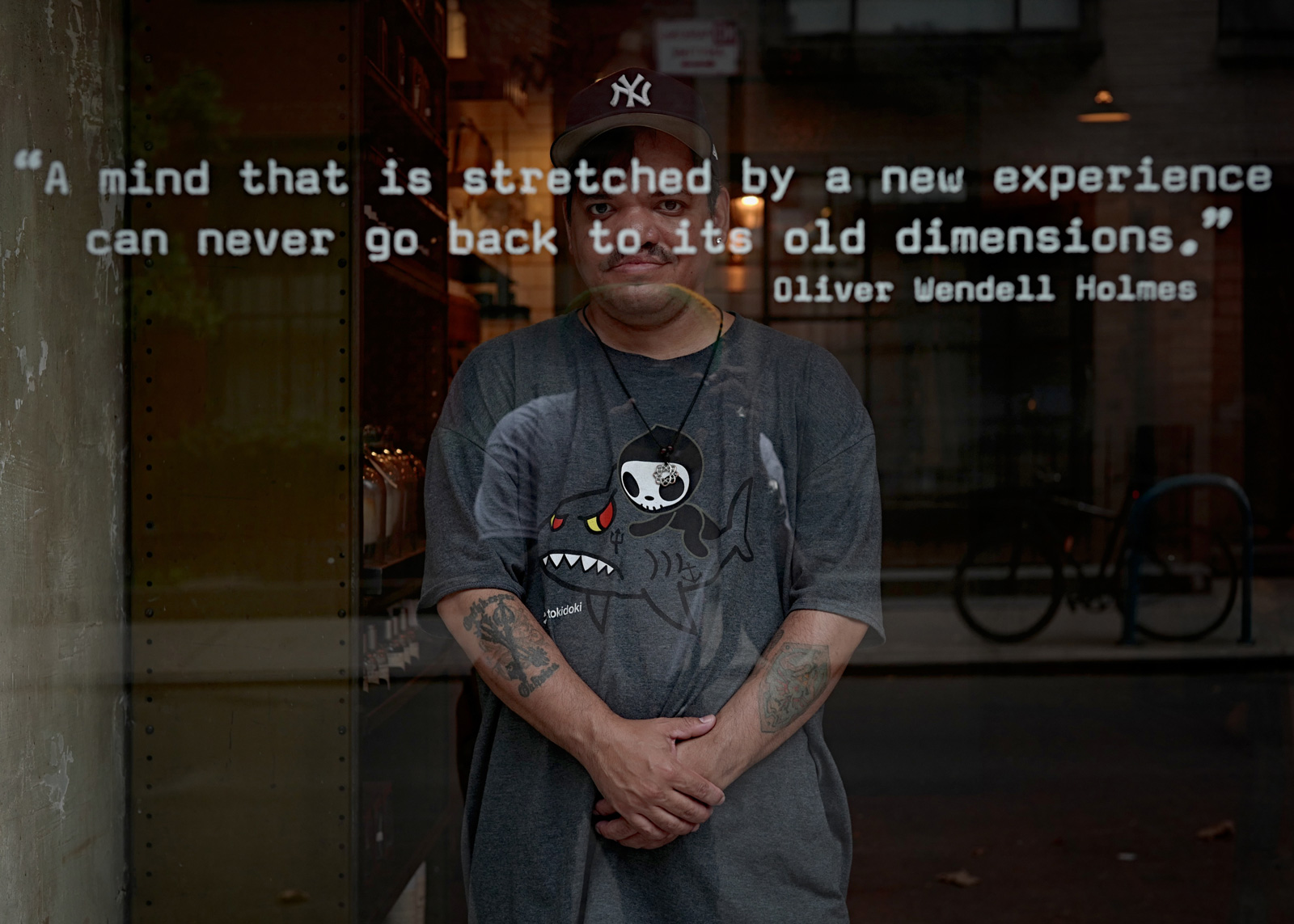
Greenwich Village was once a locus for a succession of twentieth-century progressive movements fighting for workers’, women’s, civil, and gay rights. Its history is also that of longtime residents’ determined efforts to save it from the designs of new, wealthy neighbors and powerful landlords. Among the first New York neighborhoods to gentrify, the West Village has seen that change unfold more slowly but long predating the gentrification that is rapidly transforming parts of Brooklyn and northern Manhattan. “It’s difficult to say exactly when Greenwich Village gentrified. It didn’t happen in one fell swoop as it did for [other] parts of town,” Jeremiah Moss writes in his 2017 book, Vanishing New York. (Greenwich Village is an older name and larger category, understood to include parts of the Village east of Sixth Avenue.) And yet, the neighborhood has come to be seen as a harbinger of the city’s future.
Advertisement
In his history The Village: 400 Years of Beats, Bohemians, Radicals and Rogues (2013), John Strausbaugh begins in the 1640s, when the Dutch allowed “half-free” African slaves to live there, to grow food for themselves and the colonists, while serving inhumanely as “a buffer and early-warning system in the event of an Indian attack.” Black New Yorkers lived in a part of the Village until the 1890s, starting the first professional black theater in the country, the African Grove. At the turn of the century, their houses were replaced with tenement buildings, and they were pushed out by newly-arriving Italian immigrants. The first “bohemians” also appeared in the nineteenth century—Walt Whitman among them. After the Civil War, the neighborhood was home to Irish, Italian, and Puerto Rican immigrants, dockworkers, sex workers, artists, writers, gay, lesbian, and transgender people. A few blocks away, wealthy New Yorkers lived in the stately townhouses lining Washington Square Park. As early as the first decades of the twentieth century, the commodification of the bohemian culture as a lure for tourists, and a corresponding rise in rents, caused many to declare the end of the Village as a destination for artists and writers looking to live cheaply.
“Studio rents have been multiplying chiefly, it is alleged, by the competition of bourgeois people who know nothing of art, but like to wear flowing ties and live in the midst of temptations,” Strausbaugh quotes The New York Times in 1922. Starting in the 1960s, groups like the West Village Committee and the Greenwich Village Society for Historical Preservation organized to protect the interests of longtime residents. Among their perpetual enemies: NYU, high-rise developers, Robert Moses, and landlords inclined to treat their tenement buildings and modest-sized storefronts as oil gushers.
And yet, apartment rents in 1922 rose far less steeply than they do today; and later, the Depression and the rent control policies that followed World War II tempered their climb. Despite the warning calls, the neighborhood remained a home for artists, dockworkers, and immigrants.
In 1961, Greenwich Village residents successfully defeated Moses’s plan to split Washington Square Park with a four-lane highway. A year later, a group of West Village neighbors formed the West Village Committee and successfully fought a slum-clearance plan to replace fourteen city blocks with the forerunner of today’s luxury towers. Instead, they helped to plan and build the West Village Houses, forty-two five-story brown-brick buildings containing 420 walk-up apartments near the Hudson River—today, they’re still known locally as the Jacobs housing, because she was among those leading the effort, and today they’re still affordable, though as recently as last year, that status was undermined and threatened by high-rise developers. Neighborhood activism led to the designation of Greenwich Village as a Historic District, and later to the formation of the Greenwich Village Society for Historical Preservation, which has fought successfully to landmark over 2,200 buildings in the neighborhood.
This is a double-edged sword. The Landmarks Preservation Board protects the facades of historic buildings, but not their interiors. Thus landmarking led townhouses once divided into multiple apartments to be converted into single-family mansions for the incoming super-rich—serving only to further inflame the speculative energies that skyrocketed the prices of the buildings they preserved. But Andrew Berman, executive director of GVSHP, told me that the organization’s fight continues. There is more construction and demolition in the neighborhood now than ever, underscoring the fact that landmarked status is a loose protection. “Keeping buildings more or less as is, is increasingly rare.” Mega-mansions, sometimes comprising two or more townhouses knocked through into one, are on the rise—Berman quickly lists new ones cropping up on Minetta, Jane, Perry, and Washington Streets.
Indeed, the number of single-family homes has grown astronomically in the West Village. Between 2006 and 2017, the neighborhood gained an estimated 386 one-unit detached structures—houses with space on all four sides, the number of houses with eight or more rooms approximately doubled, and between 2000 and 2010 there was an 83 percent increase in the number of residences used for seasonal, recreational, or occasional use. On Bank Street, between Washington and Greenwich Streets, a number of households were displaced to make way for a seemingly unoccupied mansion complete with a two-car garage.
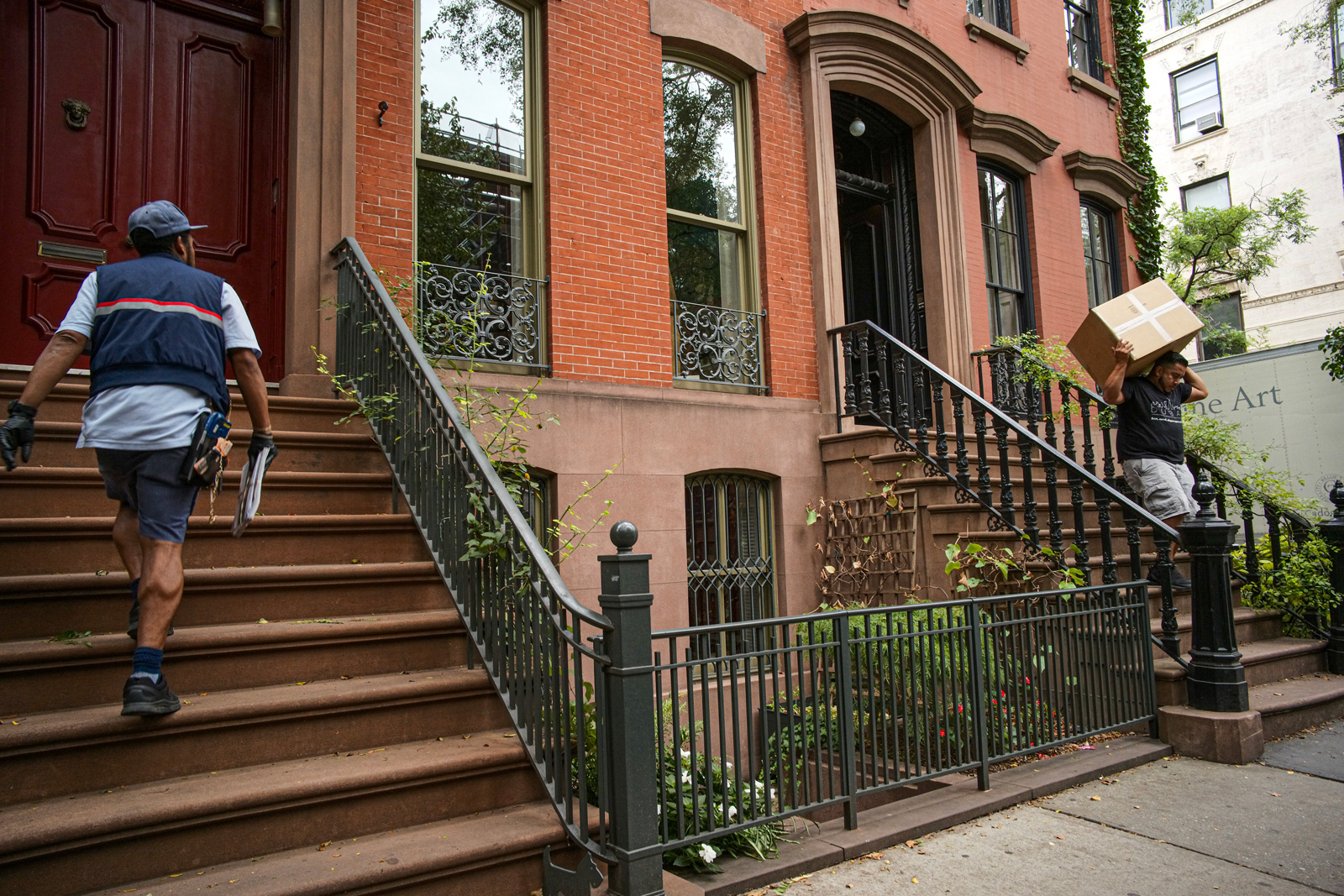
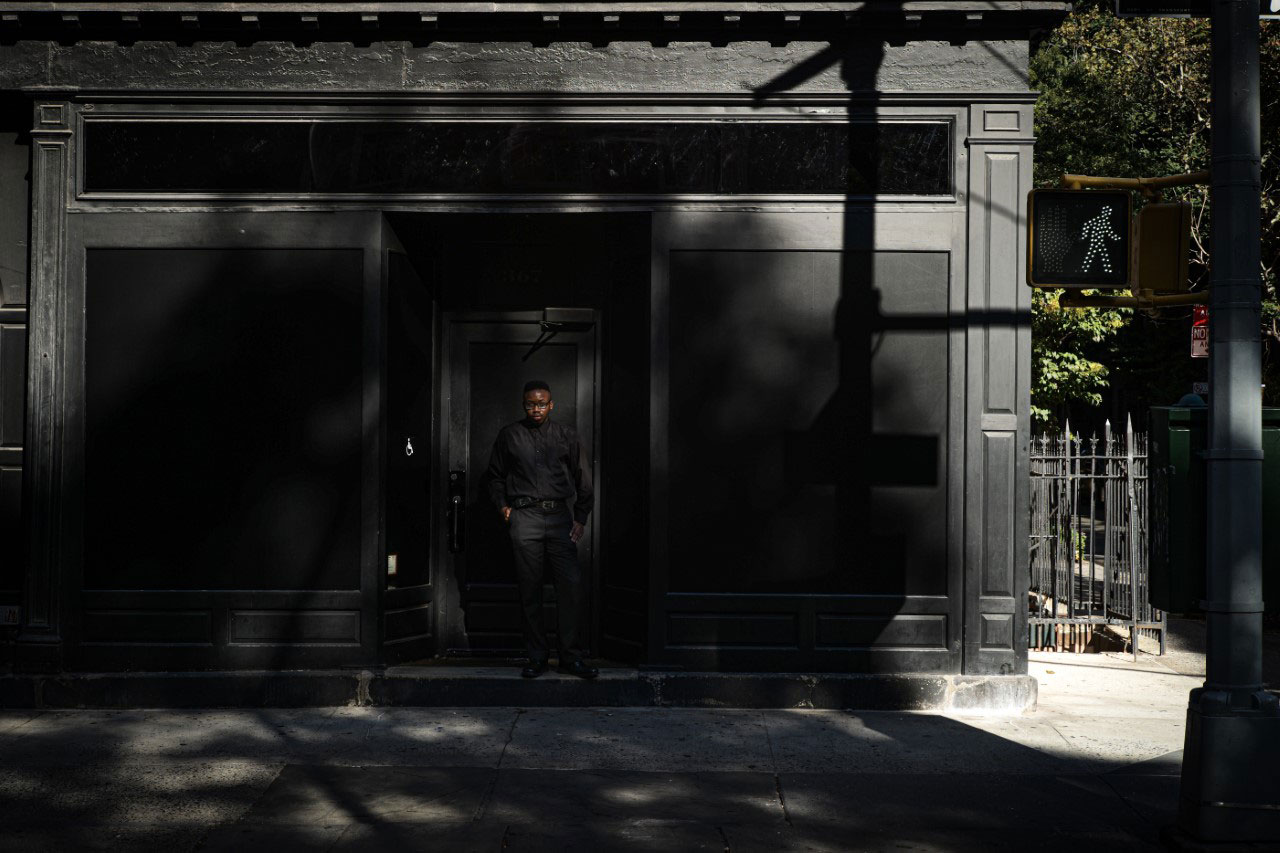
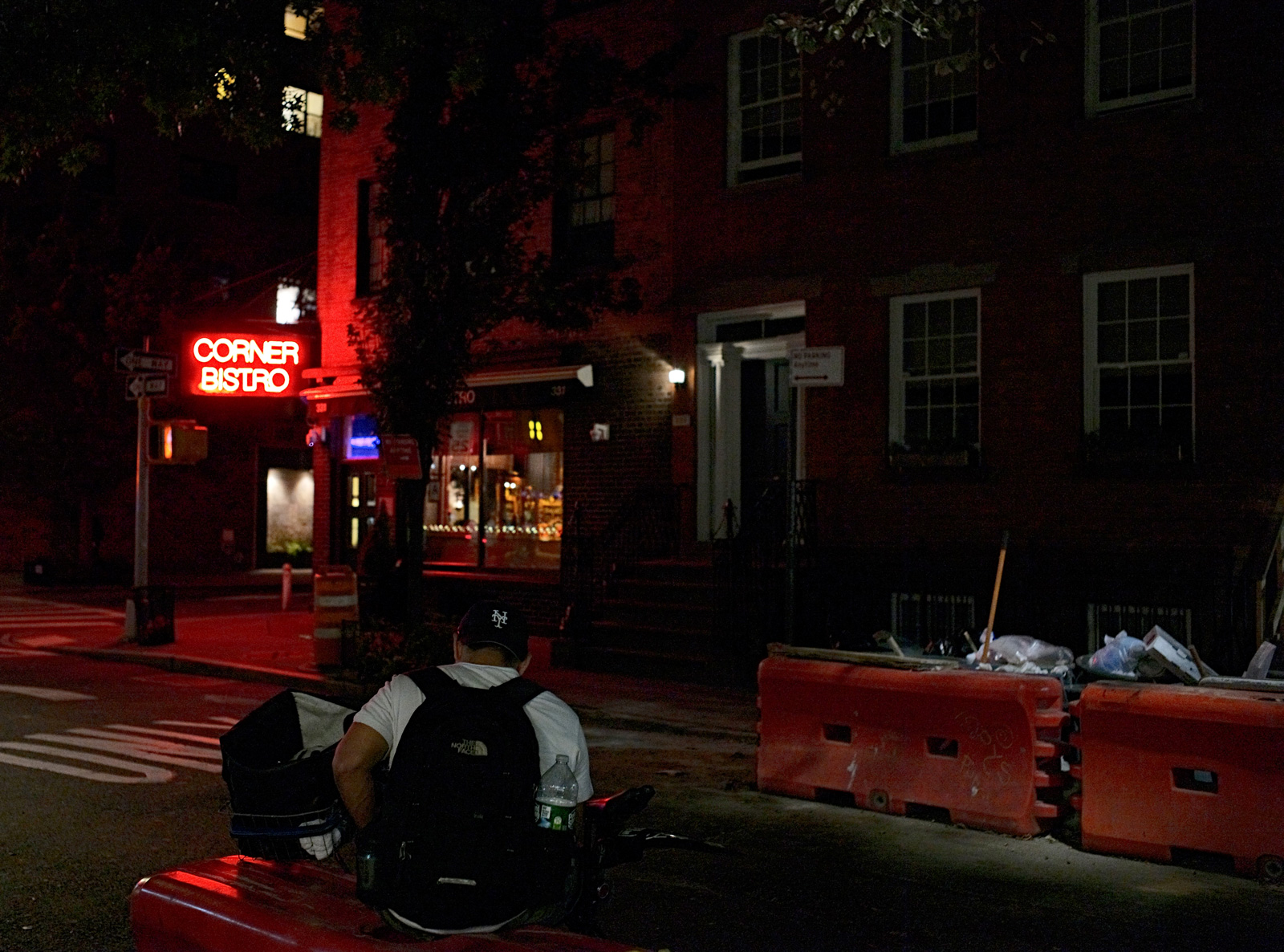
To date, the AIDS crisis has killed over 100,000 New Yorkers. In her 2012 book Gentrification of the Mind, Sarah Schulman argues that the high number of AIDS-related deaths caused a mass emptying of rent-controlled or stabilized apartments. This human tragedy also had the baleful second-order effect of boosting the gentrification of certain Manhattan neighborhoods, including Greenwich Village.
“The loss of the mix is the story,” Schulman told me. “My view is urbanity is what makes cities sophisticated, everyone is exposed to difference all the time, [and] therefore has knowledge that difference exists.
“The thing that made New York City neighborhoods so productive was their interactivity—people do not get into their cars, they see their neighbors,” she went on. The new people who have arrived, often from the suburbs, are “anti-urban,” in her view. It is not the newcomers’ wealth alone—“the ruling class has always been there,” she said—but their suburban behaviors that pose the biggest problem. And, until relatively recently, they always had immigrants and working-class neighbors, working in the neighborhood’s warehouses, workshops, and the meat market.
Today, late-stage gentrification has isolated the longest-lasting, often elderly, residents; the wealthy West Village newcomers don’t rely on local services to fill their needs. “When a mixed-income neighborhood becomes entirely wealthy, the last people standing find that everything they need is gone. All they have is their un-renovated apartment and no place to eat,” Schulman told me.
According to the Zip Code Business Patterns survey, the categories of available retail and services in two West Village zip codes shrank and changed. There are fewer manufacturing, wholesale trade, healthcare, social assistance, and arts and entertainment businesses. Most of the old factory buildings that housed defunct businesses have either been converted into condominiums and mansions or turned into high-rise modern buildings bearing the names of their former enterprises, such as the Superior Ink building, now a luxury condo development overlooking the Hudson River, the Babaco Alarm building, now a mansion, and, most grotesquely, the former Village Nursing Home, which previously had 200 beds for the neighborhood’s elderly and is now the site of a handful of full-floor apartments (between 2006 and 2016, lower Manhattan lost more than half of its certified long-term care facility beds, DNAinfo has reported).
By contrast, the neighborhood’s growing local businesses are in finance, insurance, real estate rental and leasing, accommodation, and food services. In the past ten years, the neighborhood has gained 168 additional restaurants.
Eric Lora has worked at the Village Apothecary for thirty of its thirty-six-year history. In the Eighties, the pharmacy provided AZT to AIDS patients when other pharmacies wouldn’t carry the drug. I asked Lora what’s changed since he started working at one of the neighborhood’s last remaining local pharmacies. “Christopher Street used to be gay, and there are no more porn shops,” he said. In 2014, the nearby diner Manatus closed when its monthly rent rose to $50,000, according to Jeremiah Moss’s blog, “Vanishing New York.” Lora lamented the loss of most every affordable lunch spot. “We order in.”
News articles written about the West Village cycle between jeremiads and boosterism. In 2017, The New York Times reported on Bleecker Street’s conspicuously empty storefronts and then, in December 2018, the paper declared that the street was undergoing a renaissance. This summer, I walked the stretch of Bleecker Street between 7th and 8th Avenues and counted twenty-two vacant storefronts, about half of the total on the street. Their stone faces are pockmarked from frequently changing signage, and bare traces of the brown construction paper and masking tape lining their windows signal renovations, though it’s often impossible to tell whether something is coming or going. A recent report from the city Comptroller’s office found that the square footage of New York City real estate doubled between 2007 and 2017, and amounts to some 11 million square feet.
New York State Senator Brad Hoylman has lived in the West Village, on West 10th Street, for twenty-seven years. Along with the East Village and parts of Midtown, Hoylman represents the West Village in Albany. In his district, some 750 taxpayers make $5 million or more a year, 259 of those make $10 million or more, and nine make $100 million or more. His observations echo Schulman’s.
“The incalculable part is the erosion of community,” Hoylman told me. The wealthy newcomers are far less likely to participate in local institutions like community boards. “People have a lesser stake in what happens in their neighborhood when they only live there part of the year. They don’t take mass transit or send kids to public school.” A massive wealth infusion has undermined the foundation of local democracy, Hoylman said. “Maybe there’ll be some massive correction and economic downturn and bring everything crashing down around us, but it doesn’t feel that way.”
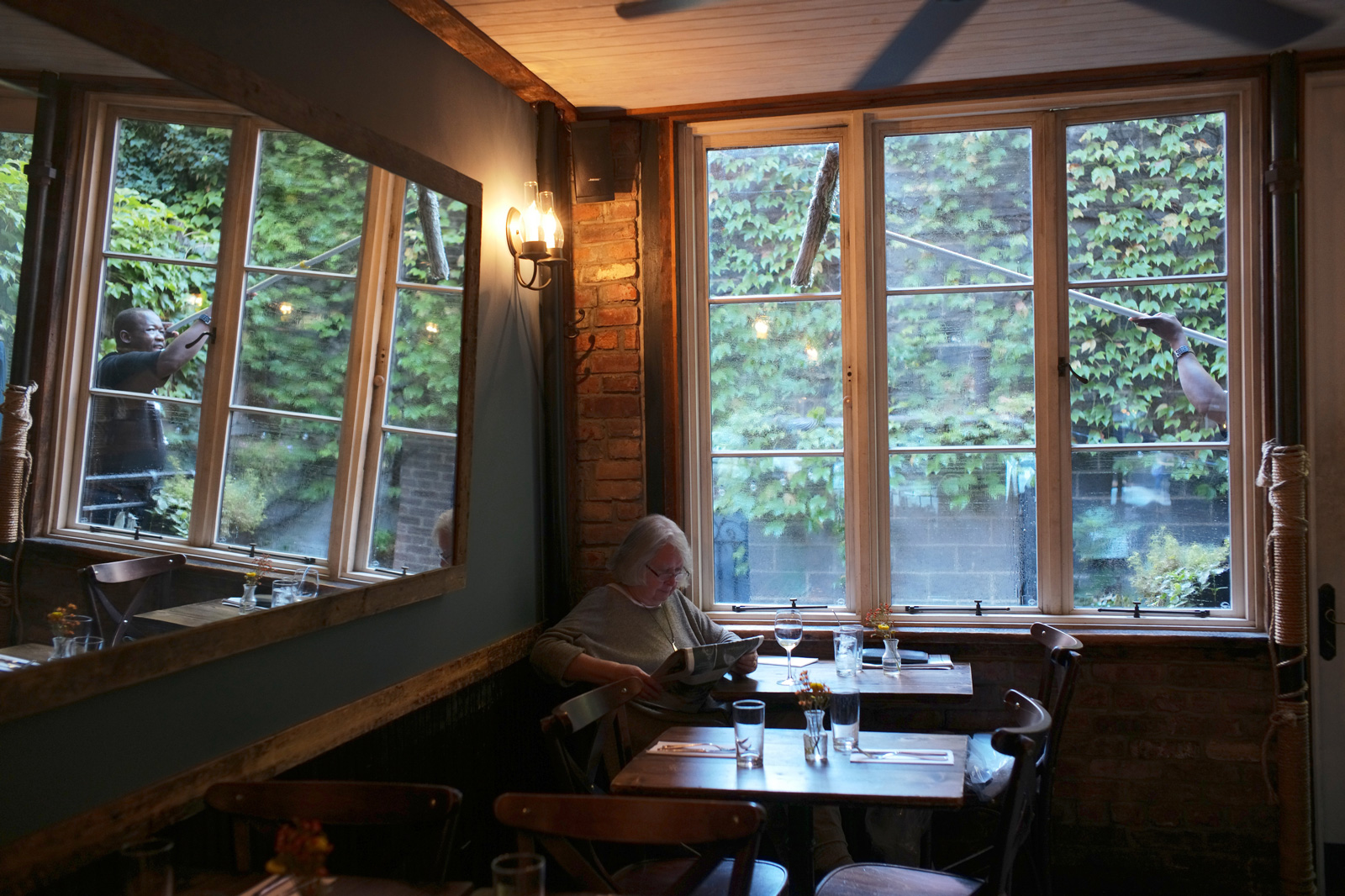
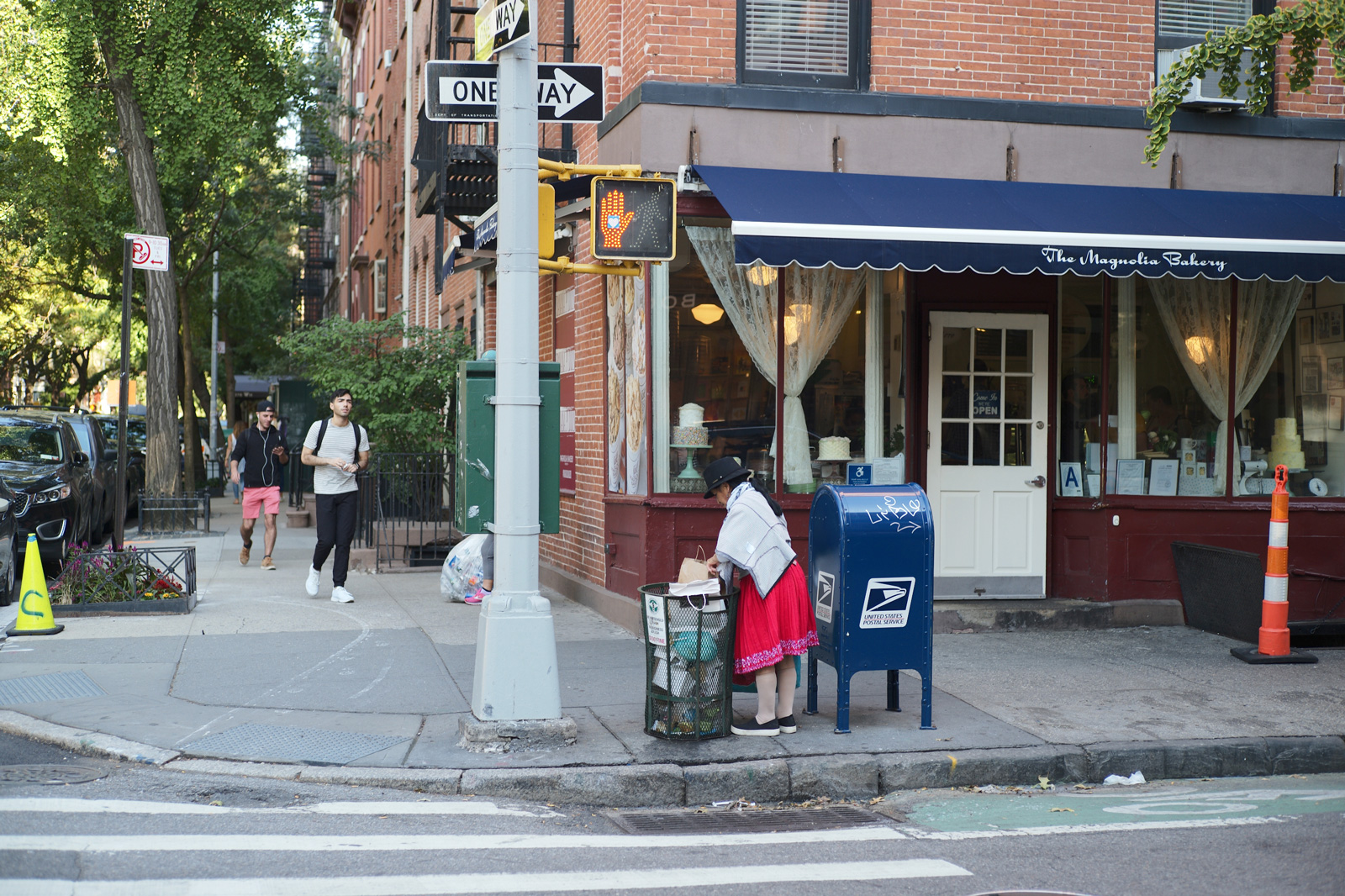
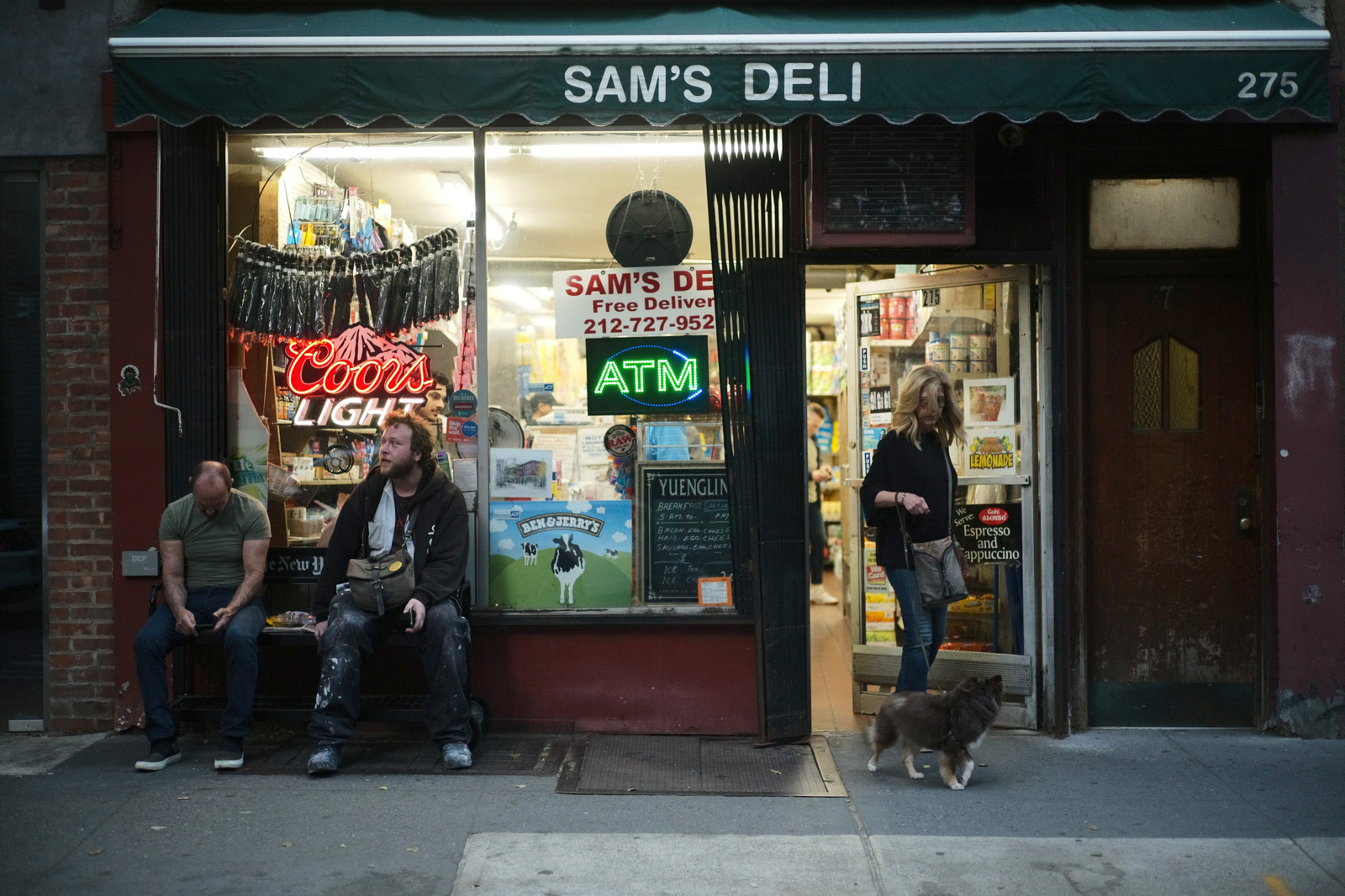
At Sam’s Deli on West 4th Street, Ali Alshella has worked behind the counter and helped run the store for ten years. Sam’s is a holdout from a past era, supplying groceries to many of the neighborhood’s longest residents. Sam’s sells fewer newspapers, and stocks fewer household cleaning supplies than in prior years, because, Ali said, “The people who live here don’t clean their own apartments.” Across the street, Steve Ells, founder of the Chipotle fast-food chain, has started conjoining two large townhouses. A computer-generated drawing posted on the construction site’s temporary wall depicts Ells’s plans for his future basement; chambers big as bomb shelters are destined to be a swimming pool and smoking room, according to Ali, who, while watching the years-long multimillion-dollar renovation has become friendly with its construction crew. Ali heard the massive metal braces now necessary to support the gutted, nineteenth-century walls alone cost $1 million. “That’s nine families gone, for one family,” Ali said. “Sometimes I wonder about the people who pay all that money to live here, only to have it empty.”
When I lived on Bank Street, I spent many afternoons in Casa Magazines on 8th Avenue, browsing the stacks of magazines that line every surface of the narrow store. Mohammad Ahmed, a popular character on Instagram, has run the magazine store since 1995, when the rent was $1,500 a month. Today, it’s $10,000, Ahmed told me. And people are buying fewer print magazines. Ahmed has increased the variety of his wares to make it less likely that a potential customer will leave empty-handed; even so, his annual sales have been falling for nearly a decade. I ask him about his social media fame. “People say, ‘Oh, Mohammed, Mohammed, your store is so good,’ but nobody comes in to pick up the magazines.” Ahmed has had to post a sign imploring people not to take pictures of magazines.
A woman leafing through Ahmed’s magazines told me she teaches at a local private school. She was born in the West Village and grew up on Perry Street. She remembers when her dad, a Time magazine writer, rented a writing studio in the Sixties for $60, and she and her mom painted the wood floors yellow. The building’s narrow hallways were made of porous plaster that bore the smell of decades of cooking. “I wonder if that building’s walls still stink now at $5,000 a month,” she later wrote me in an email. She now lives in New Jersey, but since the late 1980s she has commuted back to the neighborhood to teach at the school she attended as a child.
“I hate feeling contempt for the people taking over my neighborhood, but they are. Maybe it’s how the elderly Italians on Christopher Street felt,” she said, referencing the Italian women who used to put their elbows on pillows in the window sills and yell back and forth to each other. “In the Sixties, there was an influx of overeducated white people replacing Italians, Irish, and Puerto Ricans.”
I asked her how the students have changed since her own childhood. “They play soccer at Chelsea Piers and take Chinese lessons. They live in huge townhouses with huge dogs, and play there, not on the street. There is a lot of talk of flying on private planes, country houses, and the Hamptons,” she said. “They don’t interact with the city at all; they have a suburban existence.”
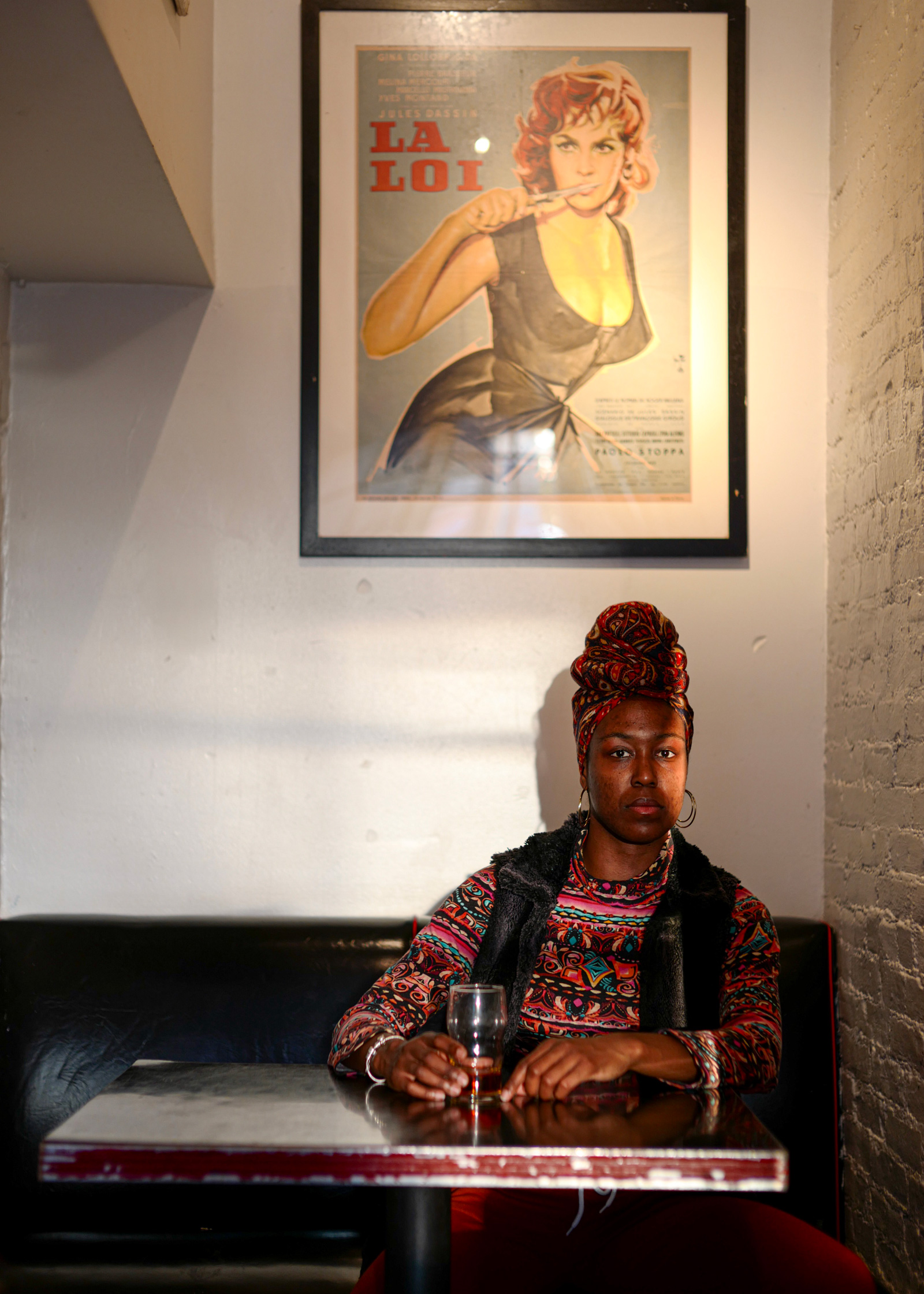
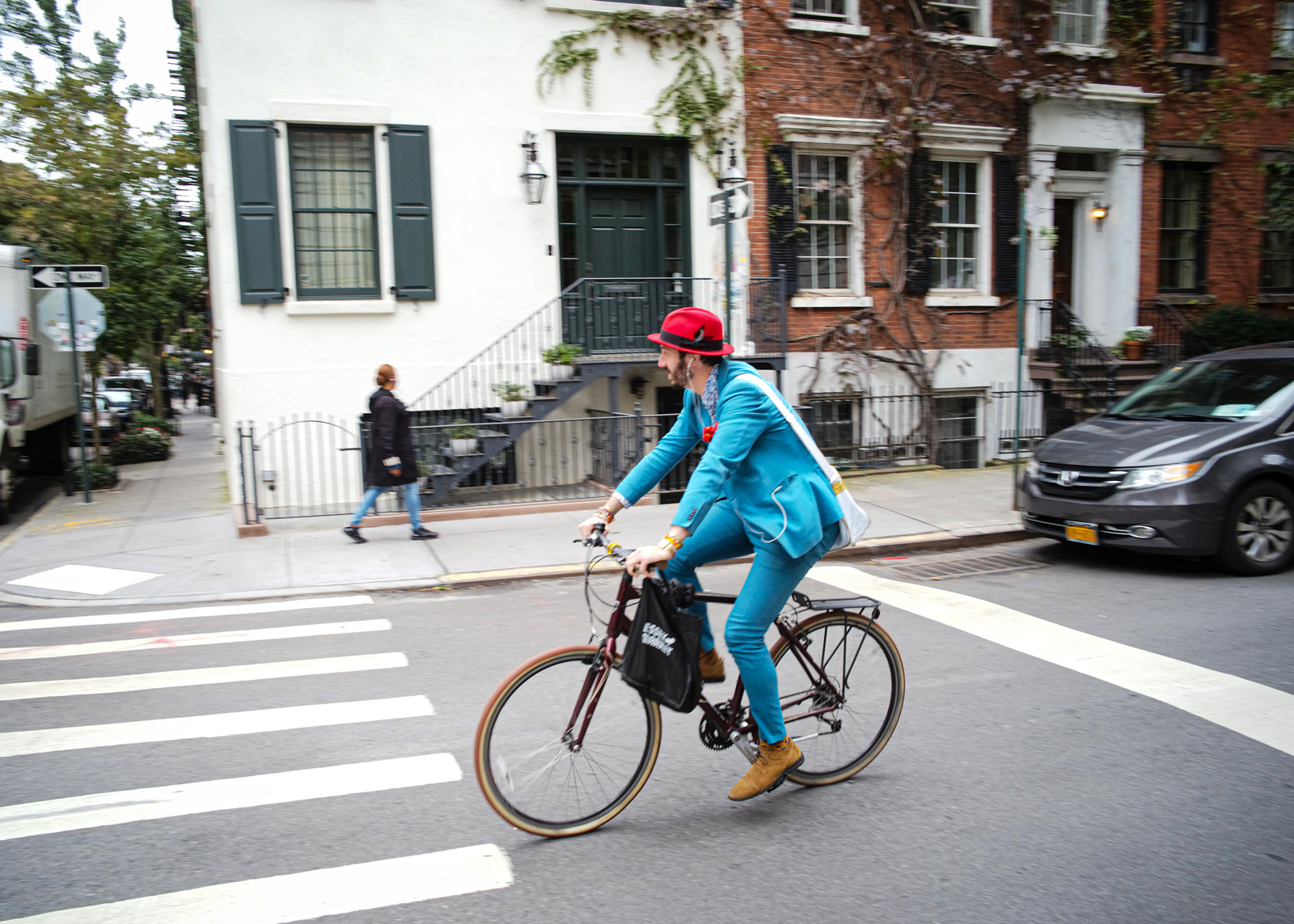
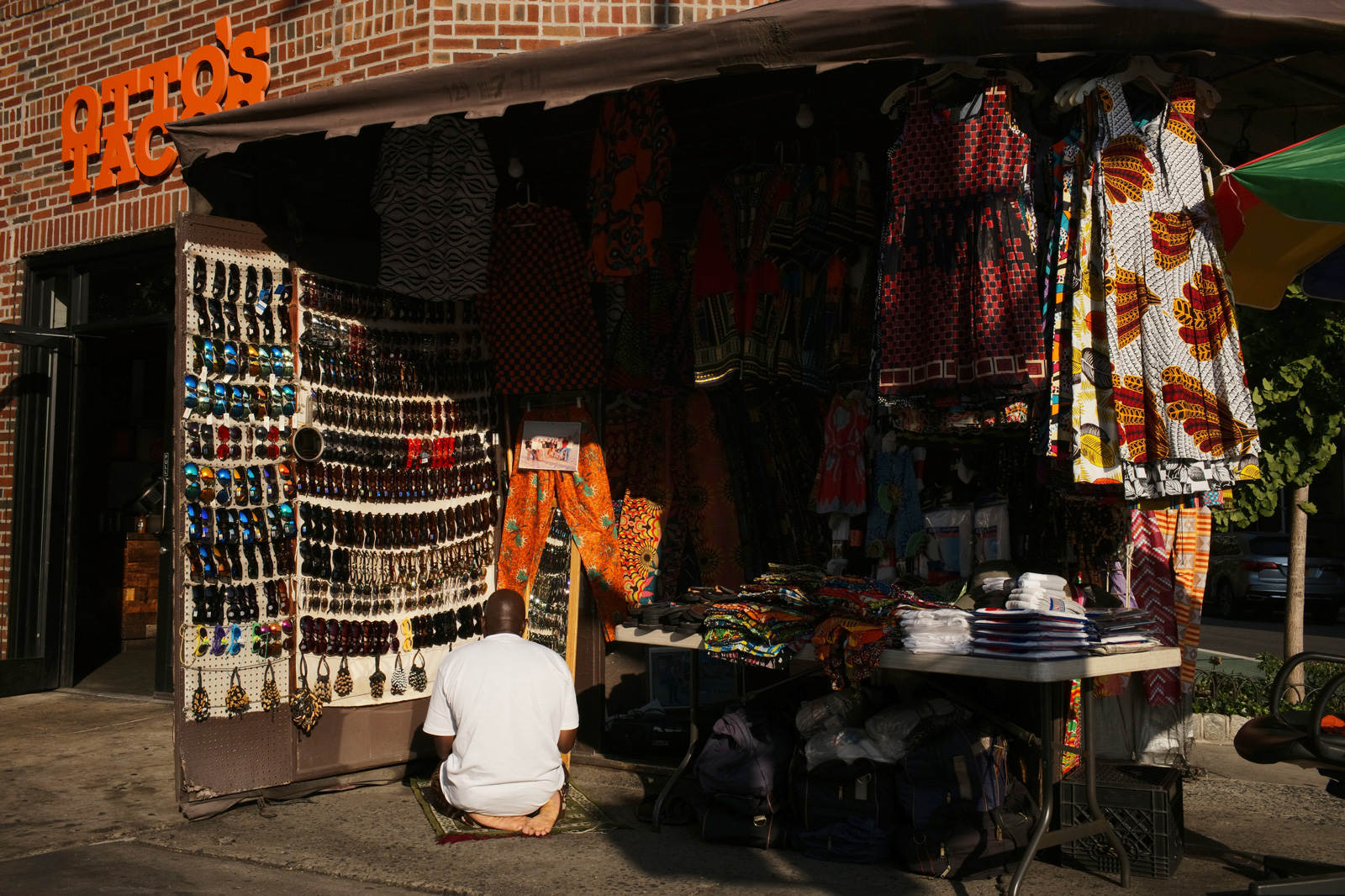
On today’s Bank Street, I saw hired staff sweep the brownstones’ stoops, their lacquered front doors free of dust. For Halloween, their owners have decorations installed professionally. In the springtime, machine lifts deliver exotic plants to rooftops. Professional bouncers stand guard at doorways during annual house parties, for which all furniture is removed in advance. All the time, tersely polite notes like “guests and deliveries welcome” hang on delicate chainlink fences at the foot of steps, to block passersby from sitting or posing for photographs. Those notes are ignored by the constant stream of tourists who flock to the West Village. When I walk by the corner of Bank Street and Greenwich Avenue, I see a man collecting bottles, a FedEx deliveryman drenched in sweat as he unloads and stacks cardboard boxes, their labels suggesting meal-kits, electronics, and furnishings inside. A bicycling deliveryman working for Caviar is taking a water break on the stoop one of the shuttered restaurants. Harvey Weinstein lived across the street, at 13 Bank Street, before he sold his mansion in 2018 for $25.6 million. One afternoon during my first week of living in the neighborhood, I was startled by someone growling, “Fuck you and FUCK your foundation.” There was Weinstein on his phone, his driver sitting in a nearby idling black Suburban.
Today, it is hard to fathom how a single mother of two supporting her family would make a living in the West Village without childcare. But that’s how Erik DuRon grew up in the neighborhood in the Seventies and Eighties. His memories include piers littered with crack vials, but also apartments that were affordable for his single mother who pursued an acting career and supported her family working as a cocktail waitress in a honky tonk bar. DuRon returned to New York later in the Nineties, and moved to Brooklyn, where he has lived ever since, selling tickets at the Guggenheim, writing short stories, and working at a literary agency and rare bookseller.
In April, DuRon opened Left Bank Books on Perry Street, named after the bankrupted West Village bookstore once owned and operated by a retired New York taxi driver. DuRon had worked in the original store’s twilight years, until its owners defaulted, stopped paying employees, and closed in 2016. Now, in a narrow, ground-floor space, Left Bank Books has been carefully crafted to succeed in the West Village as it is, not as it was.
No longer “the pokey, traditional used-book store,” as DuRon described it, the new store focuses on pricier rare books, not indiscriminately chosen paperbacks, to cater to the neighborhood’s residents: “Wealthy creative professionals, designers and people in film and theater, and real estate types who don’t know about the material but are inquisitive.”
He also has designs on the aging West Village residents, the ones who are on their way to being replaced. “Our belief is there is a wealth of books in hands of people here and no place to go,” DuRon said. Located on Perry Street, he is visible to potential donors. He’s kept a previously installed walled mirror from the day spa that preceded the store—“Good for selfies,” he told me in April—in the hopes that Instagram will help advertise his shop.
He acknowledges that he could never afford to live in the neighborhood where he grew up—and adds that he probably wouldn’t want to. About the changes, he said: “It doesn’t feel inevitable, but it does feel unstoppable.”
The July tenant laws posed the first roadblock in decades for the New York real estate lobby. Hoylman, the state senator, is a little more optimistic about at least slowing down the juggernaut. He says the new law is personal for him, “I want to continue to see my neighbors walking their dogs, pushing their strollers, going to the parks and the local supermarket, he said. “What makes a community is people who know each other; not transients who live there part-time, or come half a dozen weekends each year for cultural opportunity and shopping.”
A few days after the June tenant laws were passed, I met Danielle, ninety, on the steps of her apartment on 13th Street, where she has lived since 1959, two-thirds of her life.
“I’m surprised I’m still here,” Danielle told me. On our way to a nearby diner, we stopped in front of a restaurant named Spain, a forty-year-old holdout like Danielle, near 6th Avenue, where she waded into stacks of packages being unloaded from a big FedEx truck by deliverymen who seemed to know her. “This is illegal,” she said, referring to their parking choice, and shaking her finger. They laughed. “Officer, this is illegal,” she told a passing policeman. Without making eye contact, he threw up his hands. “Talk to the Head of Traffic” he said, “I can’t do anything.”
Danielle moved here after her husband died. During her six decades of West Village residency, she’s had several landlords. The most recent is the worst—at times, trying to buy her and her sister out, at others threatening to evict them. “Move? Where am I going to go where I know every person on the block?” Danielle told me, reminiscing about the plant boxes she used to tend around the tree beds. She scattered pigeon food. In the past, she says, she and her sister have faced their landlord’s harassment, but under the new law, they’re protected. Still, she knows fewer and fewer among the newcomers to the street, and she’s tired of trying to maintain the sense of community she once worked hard to build.
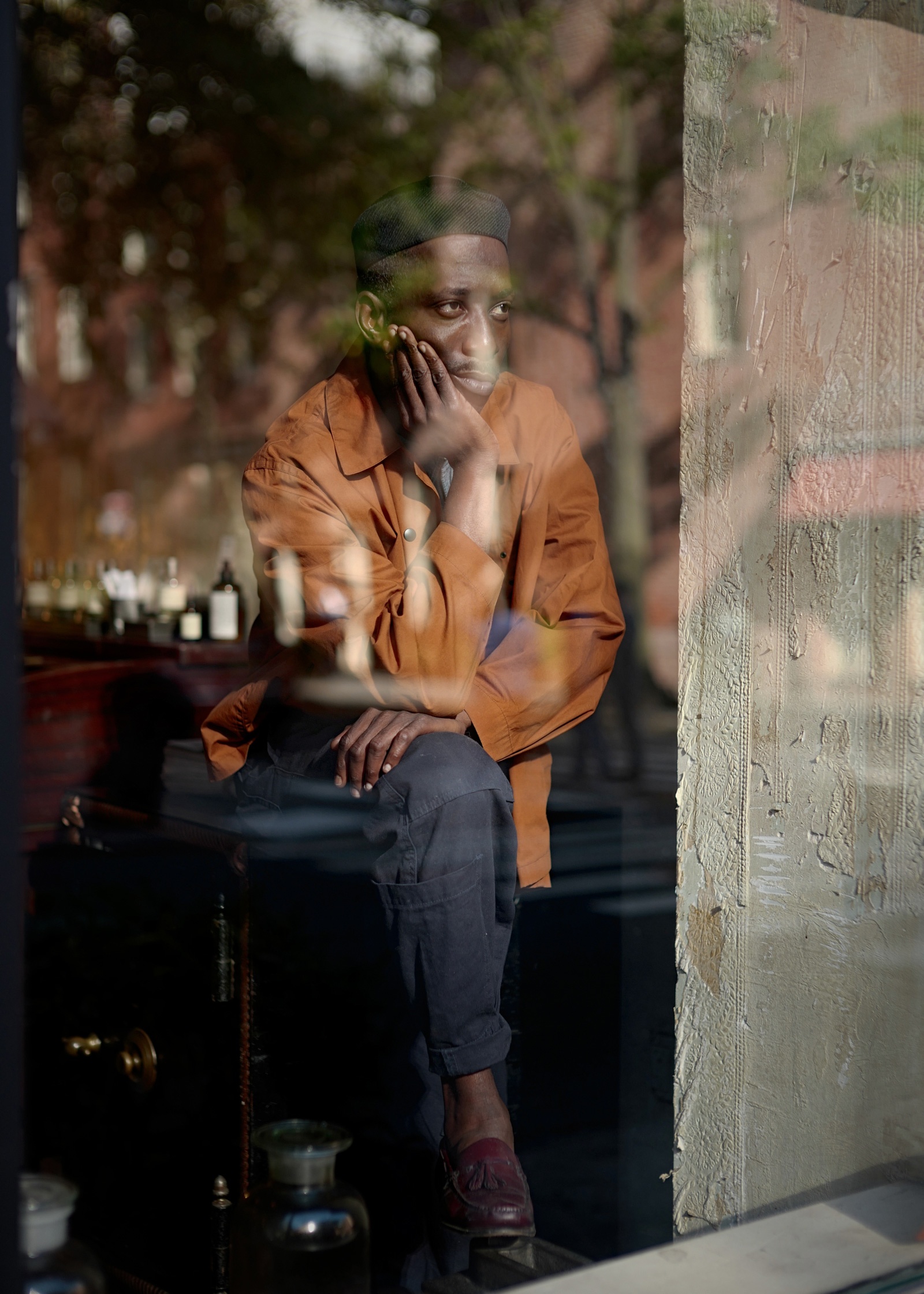
One night six years ago, soon after I first moved to Bank Street, I was walking home just as a blizzard started and, wearing a heavy jacket, I didn’t feel my purse slip off my shoulder. Two days later, holed up in my apartment, I noticed its absence. I retraced my steps to Sam’s Deli, where Ali produced my bag. He told me that a man, apparently homeless, had found it in the snow and brought it inside. The man took one $20 bill from my wallet, to buy cigarettes and ice cream, and left the purse with Ali for safekeeping, before he ventured back into the night, the neighborhood blanketed by newly fallen snow, in its most timeless state.


